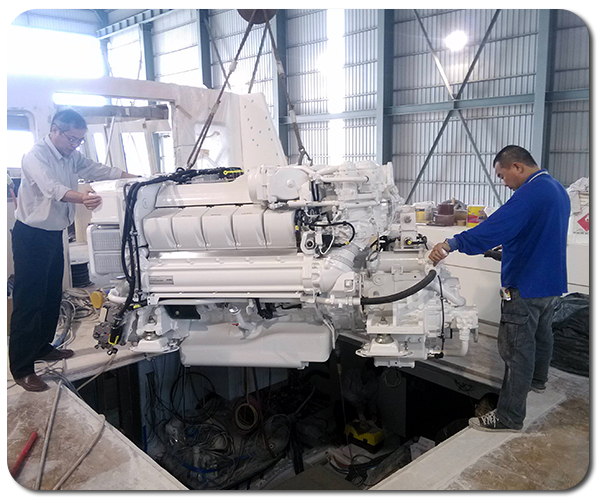
The first of two 1,600 hp, 10-cylinder, 6,000 lb. MTU 10V2000 M94 diesels being lowered into the engine room on the Hunt 80 through the aft deck hatch opening.

The port main engine is now in position atop its engine beds. The jackshaft that will connect the engine to the waterjet can be seen just to the left (aft) of the engine. Universal joints on either end of the jackshafts accommodate normal deflections in the drivetrain. The heavy engine beds support the engine's weight and their mass absorbs vibration. The waterjet's thrust, however, is absorbed by the waterjet housing mounted to the hull bottom and transom.
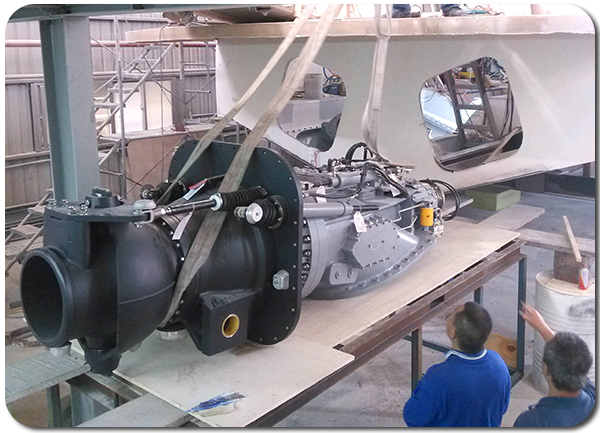
Next comes the waterjet nozzle and intake assembly. An impeller (a propeller in a tunnel) inside the gray housing draws in water through a grate in the bottom of the hull, and ejects it at high speed through the steerable black nozzle. The hydraulic arms seen at the top of the nozzle turn it from side to side for steering control.
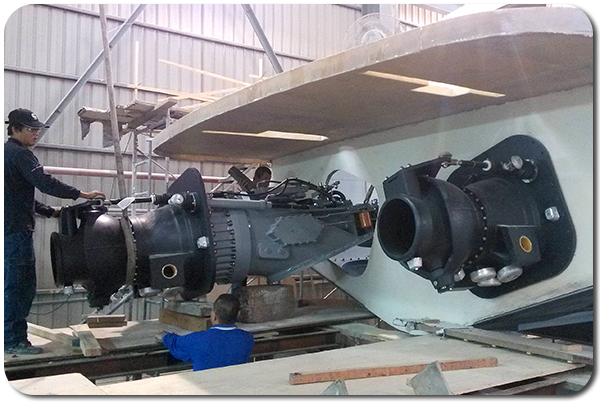
With the starboard waterjet secured in place, the port unit is now being installed. Backing "buckets" will be installed on each jet, which lower over the nozzle to deflect wash forward under the hull. Lowered part way, they neutralize thrust when no headway or sternway is wanted. The further the bucket is lowered, the more jet wash is deflected forward under the hull, increasing backing power. Boats with waterjets can stop very quickly since the engine and impeller keep turning while the buckets are lowered, quickly applying full backing power when needed.
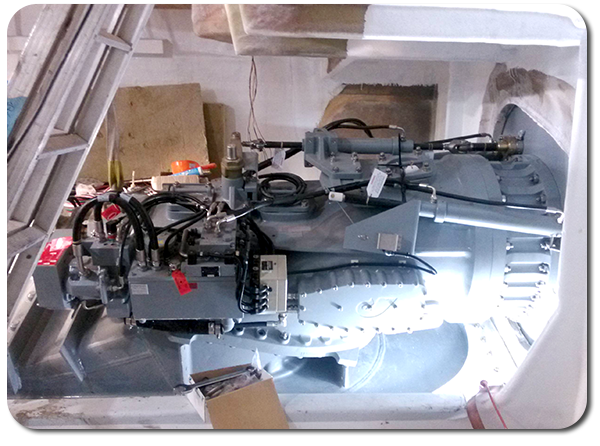
The starboard waterjet, seen from inside the engine room. The sunlight is coming from the as-yet unoccupied port waterjet opening in the transom.
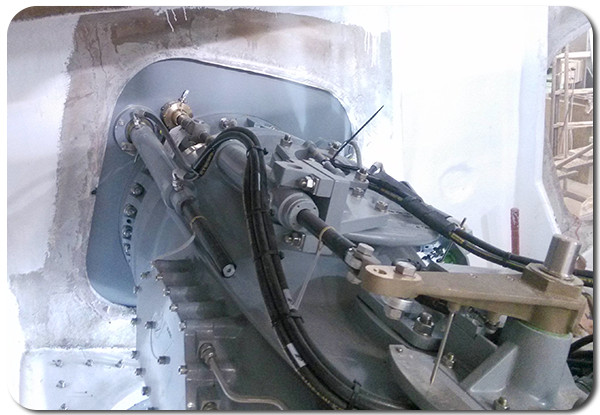
Another view of the starboard waterjet. The steering tiller arm can be seen here. The reversing bucket control arm can be seen on the left in this view.
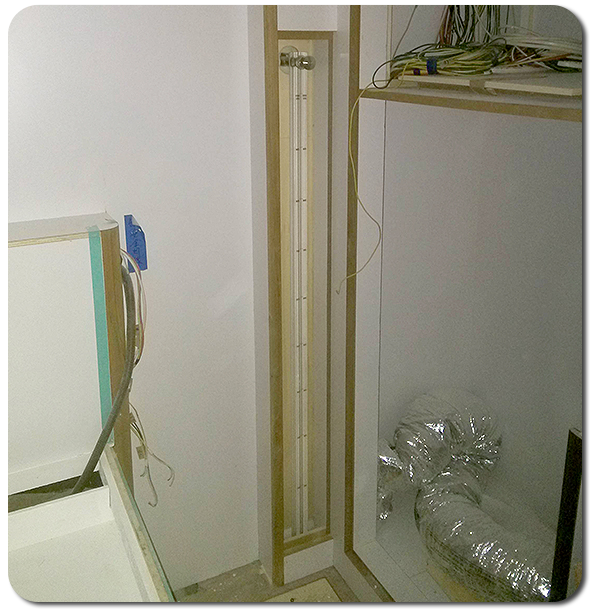
Sightglasses, one of which is seen here in the captain's cabin, take the guess work out of fuel tank levels. The level seen in the sightglass is the exact fuel level inside the tank, giving a much more reliable and accurate reading than electric gauges are capable of supplying.

